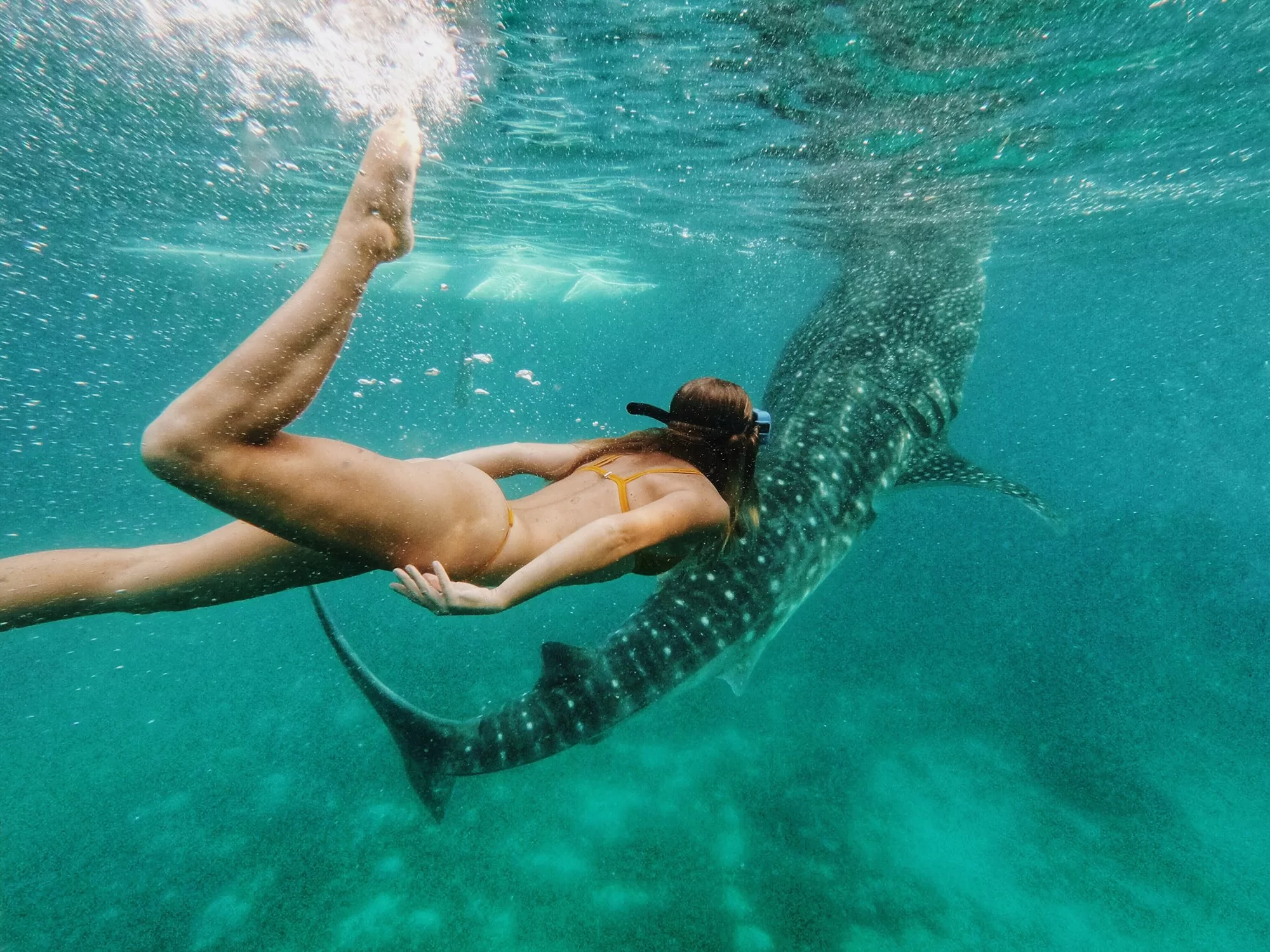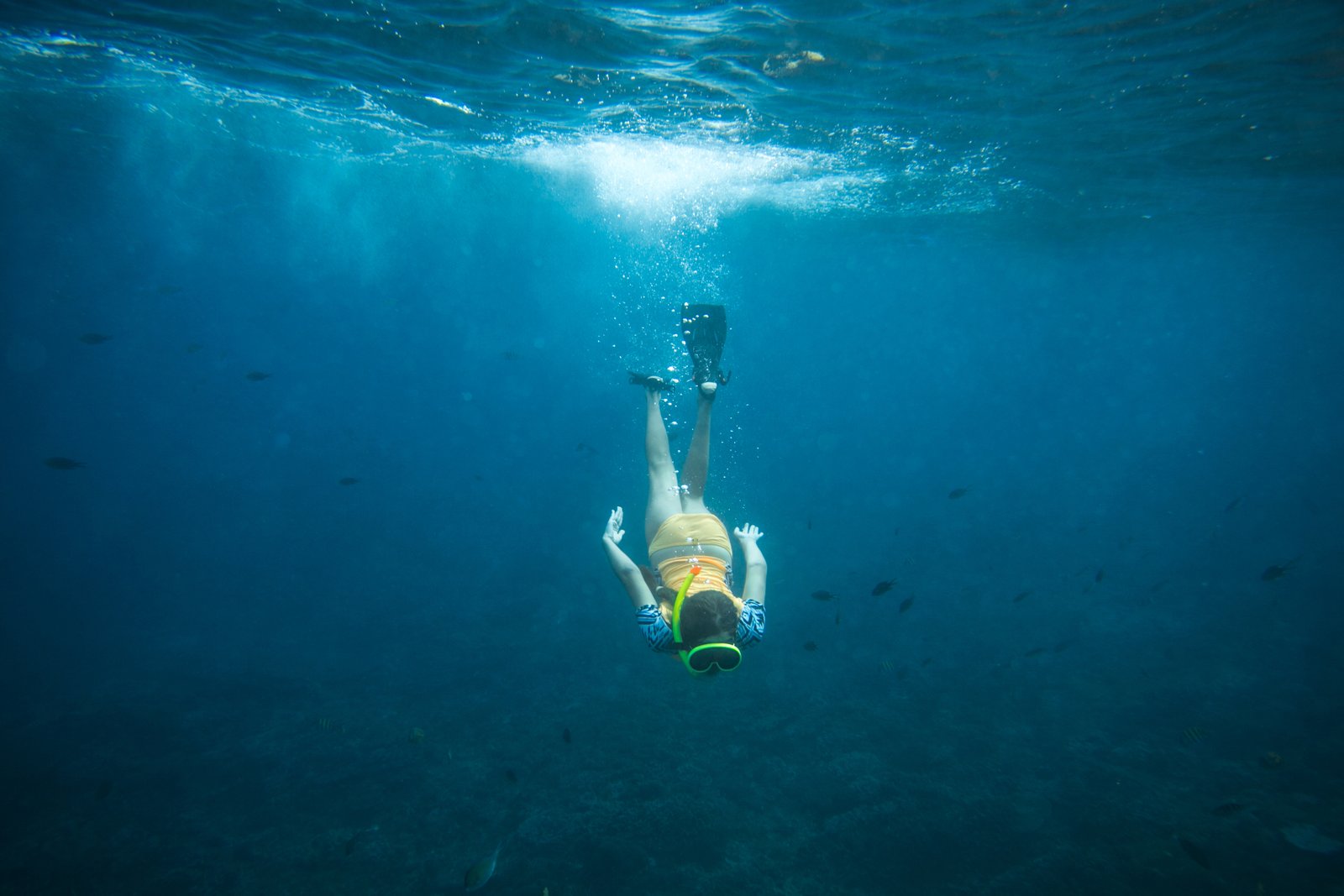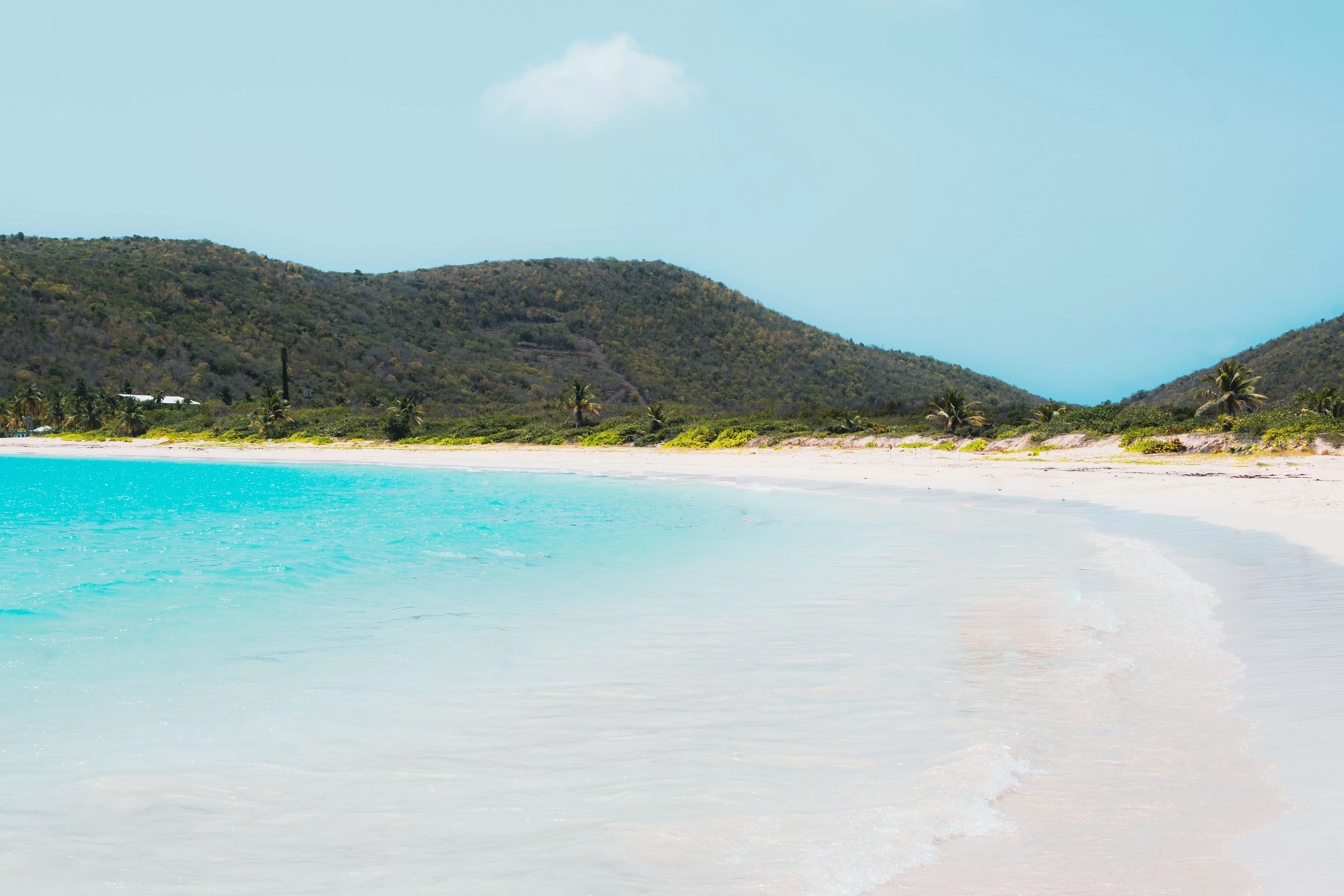Whale sharks, the gentle giants of the marine world, have long captured the imagination of divers and ocean enthusiasts alike. These magnificent creatures, with their immense size and peaceful demeanor, offer an unparalleled underwater experience. Join us on a journey to explore the allure of diving with whale sharks, as we traverse the globe to uncover the best spots and times to encounter these oceanic wonders. From the crystalline waters of the Philippines to the rich seas of Mexico, whale sharks grace various corners of our oceans, creating unforgettable memories for those lucky enough to swim alongside them.
Understanding Whale Sharks
Whale sharks are not only the largest fish in the ocean but are also among the most intriguing. Reaching lengths of up to 12 meters (40 feet) or more, these filter-feeders are known for their distinctive spotted appearance and wide, gaping mouths. Despite their size, whale sharks are remarkably gentle, feeding primarily on plankton and small fish. They are often spotted lazily cruising near the surface, allowing divers and snorkelers to observe them up close.
The importance of whale sharks extends far beyond their awe-inspiring presence. As apex predators, they play a crucial role in maintaining the balance of marine ecosystems. Their migratory patterns and feeding habits help regulate plankton populations and serve as indicators of ocean health. Understanding the behavior and characteristics of whale sharks is not just fascinating; it’s essential for their conservation and the health of our oceans. Join us as we delve deeper into the world of these majestic creatures, learning what makes them such an integral part of the marine ecosystem.
January to March: Start of the Year Adventures
The start of the year marks a spectacular time for whale shark enthusiasts. During these months, the gentle giants frequent specific parts of the world, offering thrilling opportunities for divers and snorkelers.
Best Locations for Diving with Whale Sharks During These Months
- Ningaloo Reef, Australia: Renowned for its clear waters and abundant marine life, Ningaloo Reef becomes a haven for whale sharks from mid-March. It’s an ideal spot for close encounters in the wild.
- Bay of La Paz, Mexico: The warm waters near La Paz are a magnet for whale sharks, particularly around El Mogote sandbar. This area offers a chance to swim with juvenile whale sharks in shallower waters.
- Utila, Honduras: This small Caribbean island offers a unique opportunity to spot whale sharks, especially around the full moon when plankton blooms attract these creatures.
Specific Characteristics of Whale Shark Encounters in These Regions
- Interaction with Juveniles: In places like La Paz, divers often encounter juvenile whale sharks, providing a unique perspective on the early stages of their life.
- Plankton Blooms: Seasonal plankton blooms in these areas attract whale sharks, offering divers a chance to observe their feeding behaviors.
- Visibility and Water Conditions: The clear waters in destinations like Ningaloo Reef enhance the visibility, making it easier to spot and swim alongside these majestic fish.
April to June: Mid-Year Marvels
Diving into the Heart of Whale Shark Season
As the year progresses, the whale shark migration continues, leading them to different global hotspots. This period is marked by some of the most spectacular whale shark diving experiences.
Prime Destinations for Whale Shark Sightings in this Period
- South Ari Atoll, Maldives: The Maldives becomes a whale shark hotspot, with South Ari Atoll offering year-round sightings, peaking during these months.
- Gladden Spit, Belize: Coinciding with the spawning of snappers, Gladden Spit in Belize is a prime location for observing whale sharks as they feed on the spawn.
- Cenderawasih Bay, Indonesia: This area in Indonesia offers a unique experience, where whale sharks are known to interact with local fishing platforms, providing incredible up-close encounters.
Unique Aspects of Diving Experiences in These Locations
- Nighttime Feeding Phenomena: In places like Belize, divers can witness the rare event of whale sharks feeding at night on fish spawn.
- Interaction with Local Fisheries: The whale sharks’ interaction with fishing platforms in Indonesia presents a distinctive opportunity to observe these creatures in a unique setting.
- Calm and Clear Waters: The calm and clear waters in the Maldives provide ideal conditions for snorkelers and divers of all levels to swim with whale sharks.
July to September: Peak Season Highlights
The Apex of Whale Shark Encounters
As the calendar flips to the heart of summer, whale shark sightings reach their peak. This period is often considered the best time to experience these magnificent creatures in their natural habitat.
Highlighting the Top Spots for Whale Shark Encounters
- Isla Mujeres, Mexico: Known for one of the largest aggregations of whale sharks in the world, Isla Mujeres becomes a bustling hub for these giants, especially in August.
- Djibouti, Horn of Africa: Uniquely positioned, Djibouti offers a rare opportunity to witness large groups of whale sharks, particularly in the Bay of Ghoubbet.
- Seychelles, Indian Ocean: The warm, nutrient-rich waters around Seychelles attract whale sharks, making it a prime location for sightings during these months.
Discussing the Behavior and Patterns of Whale Sharks During Peak Season
- Feeding Aggregations: Many of these locations experience significant plankton blooms, leading to feeding aggregations of whale sharks.
- Social Behavior: This period often showcases the social side of whale sharks, with larger groups gathering, offering a rare glimpse into their interactions.
- Predictable Movements: Thanks to research and tracking, the movements of whale sharks in these areas are better understood, allowing for more predictable encounters.
October to December: End of Year Encounters
A Serene Conclusion to Whale Shark Season
As the year winds down, so does the whale shark season in many parts of the world, but there are still places where these gentle giants can be spotted.
Locations Where Whale Sharks Are Commonly Seen in These Months
- Galapagos Islands, Ecuador: The nutrient-rich waters of the Galapagos are ideal for late-season whale shark sightings, especially around Darwin and Wolf Islands.
- Tanzania, Mafia Island: The waters around Mafia Island become a hotspot for whale sharks from October onwards, attracting them close to the shore.
- Western Australia, Ningaloo Reef: While the peak season is earlier in the year, occasional sightings are still possible around Ningaloo Reef during these months.
Special Considerations for Diving During This Period
- Variable Weather Conditions: As the seasons change, divers should be prepared for variable weather and water conditions.
- Conservation Awareness: With the end of the peak season, it’s an important time to focus on conservation efforts and respect for the whale sharks’ natural environment.
- Chance Encounters: While sightings can be less predictable, they often provide more intimate and serene experiences with fewer crowds.
Gear and Preparation for Whale Shark Diving
Essential Equipment for Memorable Encounters with Whale Sharks
Diving with whale sharks is an extraordinary experience that requires appropriate gear and preparation. Ensuring you’re well-equipped and mentally prepared is key to a safe and enjoyable encounter.
Essential Diving Gear for Whale Shark Encounters
- Snorkeling or Diving Gear: A well-fitted mask, snorkel, and fins are essential. For divers, add a BCD (Buoyancy Control Device), regulator, and appropriate wetsuit.
- Underwater Camera: A camera with a waterproof housing is a must for capturing this incredible experience.
- GPS Device or Dive Computer: Useful for navigation and monitoring your dive profile.
- Eco-Friendly Sunscreen: To protect yourself and the marine environment, opt for reef-safe sunscreen.
Tips on Physical and Mental Preparation
- Physical Fitness: Being in good physical shape enhances your swimming ability and overall enjoyment.
- Mental Readiness: Understand and respect that you’re entering the whale shark’s natural habitat. Stay calm and composed to fully appreciate the experience.
- Knowledge of Whale Sharks: Familiarize yourself with their behaviors and movements for a more insightful dive.
Ethical and Responsible Diving Practices
Sustaining the Gentle Giants: The Importance of Responsible Diving
When diving with whale sharks, it’s crucial to follow ethical guidelines to ensure the safety and well-being of these majestic creatures.
Guidelines for Respectful and Sustainable Whale Shark Interactions
- Do Not Touch: Always maintain a respectful distance and never attempt to touch or ride the whale sharks.
- Minimize Disturbance: Avoid using flash photography and sudden movements that can stress the animals.
- Follow Local Regulations: Adhere to the guidelines set by local authorities and conservationists.
The Role of Divers in Conservation Efforts
- Awareness and Advocacy: Use your experience to educate others about whale sharks and the importance of marine conservation.
- Support Conservation Initiatives: Engage with and support local and global conservation programs dedicated to protecting whale sharks.
Capturing the Moment: Photography Tips
Creating Lasting Memories: Photographing Whale Sharks
Documenting your whale shark encounter through photography can be rewarding, but it requires the right techniques and equipment.
Techniques for Underwater Photography with Whale Sharks
- Wide-Angle Lens: Use a wide-angle lens to capture the grandeur of the whale shark and its environment.
- Natural Lighting: Utilize natural light for the best color accuracy, especially in shallow waters.
- Composition and Patience: Focus on framing your shots and be patient, waiting for the right moment to capture the whale shark’s natural behavior.
Equipment Recommendations and Settings
- Underwater Housing: Ensure your camera is equipped with a durable underwater housing.
- Settings for Clarity: Adjust shutter speed and aperture settings to suit the underwater lighting conditions.
- Stabilization Tools: Use a tripod or stabilizer to keep your shots steady amidst ocean currents.
Beyond Diving: Supporting Whale Shark Conservation
Joining the Fight for the Future: How to Support Whale Shark Conservation
Diving with whale sharks is a privilege that comes with a responsibility towards these majestic creatures. Beyond the thrill of the dive, there are impactful ways to contribute to their conservation.
Ways to Get Involved in Whale Shark Conservation
- Adopt a Whale Shark: Many organizations offer programs where you can adopt a whale shark, contributing funds directly to research and conservation efforts.
- Participate in Citizen Science Projects: Engage in projects that involve tracking whale shark movements or photo-identification to aid in research.
- Educate and Advocate: Use your platform, no matter how big or small, to spread awareness about whale shark conservation and the threats they face.
Highlighting Research and Conservation Organizations
- Marine Megafauna Foundation: Focused on the research and conservation of large marine species, including whale sharks.
- Whale Shark.org: A global photo-identification database that enables divers to contribute to whale shark research.
- WWF (World Wildlife Fund): Actively involved in whale shark conservation, offering various ways for individuals to get involved and support their work.
FAQ Section
Answering Your Whale Shark Diving Queries
Q: Do I need to be certified to dive with whale sharks?
A: While certification is not always required, especially for snorkeling, being a certified diver can enhance your experience.
Q: Is it safe to dive with whale sharks?
A: Yes, whale sharks are generally safe to dive with as they are gentle and not aggressive towards humans.
Q: What is the best time of year to dive with whale sharks?
A: The best time varies by location, but generally, the peak season is between June and September in many parts of the world.
Q: Can I touch the whale sharks while diving?
A: No, touching whale sharks is strongly discouraged as it can harm them and disrupt their natural behavior.
Q: How can my diving trip contribute to whale shark conservation?
A: Choose eco-friendly dive operators, participate in citizen science projects, and support conservation organizations.
Conclusion
Reflecting on the Majesty and Responsibility of Diving with Whale Sharks
Diving with whale sharks is more than an adventure; it’s an encounter that leaves a lasting imprint on your soul. These gentle giants, gliding gracefully through the ocean, symbolize the beauty and fragility of our marine ecosystems. As we return from these dives, we carry not just memories but also a responsibility – to advocate for and protect these magnificent creatures. Through responsible diving practices and active participation in conservation efforts, we can ensure that future generations will also have the chance to experience the awe-inspiring presence of whale sharks. Let’s dive, explore, and protect – for the ocean is not just a playground, but a life source that we are all part of.




